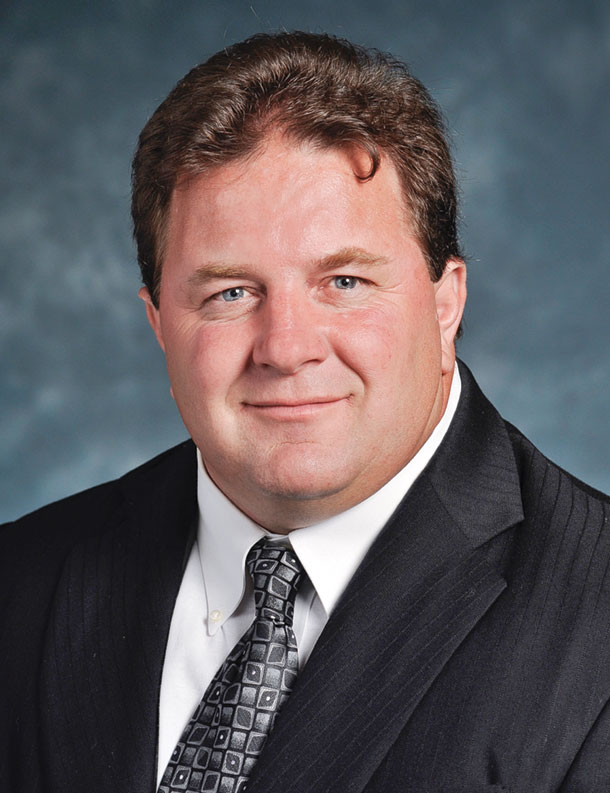Labor issues were critical topics both on the agenda and in conversations throughout the High Plains Dairy Conference in Amarillo, Texas, March 6 and 7, 2018. More than 300 dairy producers, industry personnel and university staff gathered for the event.
Dairies in Texas, New Mexico, Colorado and Kansas are navigating the immigration crisis daily. And because this remains a fast-growing dairy region in the U.S., producers are hungry for solutions that work.
“Four years ago, if the topic of immigration were on a conference panel, most of the dairymen would be in the halls rather than in the session,” pointed out Robert Hagevoort, Ph.D., of New Mexico State University dairy extension. “Today, every single dairyman was in every session paying close attention to the updates.”
Dairymen are being forced to become more educated on the legal issues surrounding immigration. Sarah S. Thomas, an immigration attorney with Noble & Vapri of Albuquerque, New Mexico, described the process dairymen face when served with a subpoena for an Immigration and Customs Enforcement (ICE) raid or audit. “Keep ICE personnel in public areas of the dairies,” she recommends.
“Employee-only areas of the dairy should be labeled, and access should be restricted.”
Thomas also addressed specific technical and legal violations that may result in fines for dairies employing undocumented workers. “A key factor is a good-faith effort to comply,” she advised. “Be prepared for agents to find discrepancies and suspect documents, then work to address those quickly.”
For dairies employing large numbers of immigrants, establish a relationship with a firm specializing in immigration law before ICE pulls into your lane.
For the legislative perspective on immigration reform, Charlie Garrison of The Garrison Group in Washington, D.C., provided an update. “The labor situation in agriculture is nothing short of a crisis,” Garrison said. And while President Trump often weighs in on immigration reform, Garrison pointed out, “Only the Congress can deal with immigration. The Constitution is explicit.”
Garrison described HR 4760, often referred to as “Secure America’s Future Act” or the SAF Act. It provides a new ag “guest worker” program as well as a three-year Deferred Action on Childhood Arrivals (DACA) extension. Of key interest to dairymen, the House bill for the H-2C guest worker program includes a mandatory e-Verify component. However, workers can have year-round jobs. “There will be no implementation until mandatory e-Verify is signed into law,” he explained.
While an “ag fix” of immigration issues (in Garrison’s words) affects about 1.2 million people in the U.S., it also leaves out about 10 million other immigrants. Therefore, it’s described in Washington as a “partial fix.” Still, it’s a key element in negotiations. “The message to Republicans is ‘no ag fix, no e-Verify,’” he said.
Garrison also explained the divide in the country on the touchback issue, a requirement for immigrants to return to their home country for a period of time every so many months. U.S. citizens are also divided on ag workers maintaining non-immigrant intent.
While legislation grinds through our nation’s capital, dairies are facing the reality of operating within a broken system of immigration every day. “We do have dairies right now being audited in New Mexico,” pointed out Beverly Idsinga, executive director of the Dairy Producers of New Mexico.

Darren Turley, executive director of the Texas Association of Dairymen, has witnessed the results of those audits. “We’ve seen 50 to 75 percent of a dairy’s workforce terminated in Panhandle dairies,” he explained to the crowd. “But those people were not followed up on. In many cases, they simply went to work for another dairy down the road.”
Turley has spoken to congressional leaders about how ICE’s audit and raid strategy is not solving the immigration problem. “There’s not a flaw in the forms,” Turley said. “There’s a flaw in the numbers we’re being given. Most of the dairies are keeping good files.” And while his colleagues have shared ICE worked in Arizona heavily last fall, “This issue is not over,” Turley said.
But the labor pool is changing. “We saw a definite decrease in the number of people trying to cross the border after the election,” Turley said. “There’s been a shift in the middle class in Mexico. Fewer people are coming to look for work.”
Texas dairyman tells his experience
A Lubbock, Texas ICE agent delivered papers to Will Collier’s dairy in Snyder, Texas, on April 13, 2017, asking for I-9s. Collier was milking 2,200 cows. He hired an attorney who reviewed the paperwork before mailing the forms to a Dallas office.
“Three weeks later, I was notified 20 of my 26 employees didn’t check out,” he said. When his employees received the formal letters notifying them of the problems and asking for copies of their documentation, it was the first time any of his employees had ever heard of an audit. Two individuals were able to provide additional information and were approved.
“We had to terminate 18 employees,” Collier explained to fellow dairymen. “Some guys had been with us 10 to 12 years.” Many of his employees were “like family members.” Seventy percent of his staff was gone.
“We dealt with it by selling cows,” Collier said. “We went from 2,200 to milking 1,700 cows in two weeks.” The dairyman also sold all his calves so he could focus on his milking herd. They picked up some high school boys to help fill the critical labor needs.
Six weeks later, Collier heard back from ICE. He had received no fines. By that time, most of the employees he was forced to terminate had found work on other farms nearby.
“What doesn’t kill you makes you stronger,” Collier shared one year later. They remain downsized because of the audit.
The dairyman has applied for specialty visas, such as for breeding cows, and currently has three of these employees working on the farm. He’s also had some key signs made informing visitors to his dairy to “Please remain in your vehicle” and “Please call [his cell number]” for more information.
“We’ll probably never be back, but we are fully staffed today,” Collier said. He said the dairy has become more efficient with added technology. Overall, he felt it took about three months to recover from the audit.
In cases such as an ICE raid, dairymen may find themselves faced with an additional challenge: the media. Marty McKinzie, vice president of industry image and relations with Dairy Max, outlined ways producers could be prepared to respond properly. With a little preparation, McKinzie suggested dairymen could even turn the negative situation into a positive experience.
“First, know your audience. Make a good first impression with simple language, speaking clearly,” McKinzie began. “Show compassion for your employees, your cows and your land.” He advised dairymen to focus less on the business aspects affected by the raid. “Remember, you are talking to the consumer.”
David Douphrate of the University of Texas School of Public Health summarized the importance of this approach by saying, “Consumers want to make sure we are taking care of cows and workers.”
“Gather your thoughts, and try to have no more than three key messages,” said PR expert McKinzie. If necessary, correct wrong information – but remember everything you say is reportable. “There is no ‘off the record,’” he warned.
“Don’t panic or be defensive or argumentative,” McKinzie said. “And don’t provide more information than is asked. Don’t speculate, and don’t say ‘no comment.’” But do add one more thing to your task list. “Practice is very valuable in the event this situation occurs.” Finally, McKinzie advised dairymen to be cooperative with ICE agents and honest with employees while showing compassion.
“Every one of us in this room works really hard to do the right thing,” McKinzie said. “We have to view this as an opportunity because our attitude will affect how this is viewed by the consumer.” ![]()
PHOTO 1: “Four years ago, if the topic of immigration were on a conference panel, most of the dairymen would be in the halls rather than in the session,” points out Robert Hagevoort, Ph.D. of New Mexico State University Dairy Extension. “Today, every single dairyman was in every session paying close attention to the updates.” Photo provided by Robert Hagevoort.
PHOTO 2: “We’ve seen 50 to 75 percent of a dairy’s workforce terminated in Panhandle dairies,” says Darren Turley, executive director of the Texas Association of Dairymen. Photo provided by Darren Turley, Texas Association of Dairymen.
Karena Elliott is an international freelance writer who makes her home in Amarillo, Texas.
Read more coverage on the topic of immigration, including what you need to know about I-9 forms and audits, with our handy e-book. Dairy immigration reform eBook.







